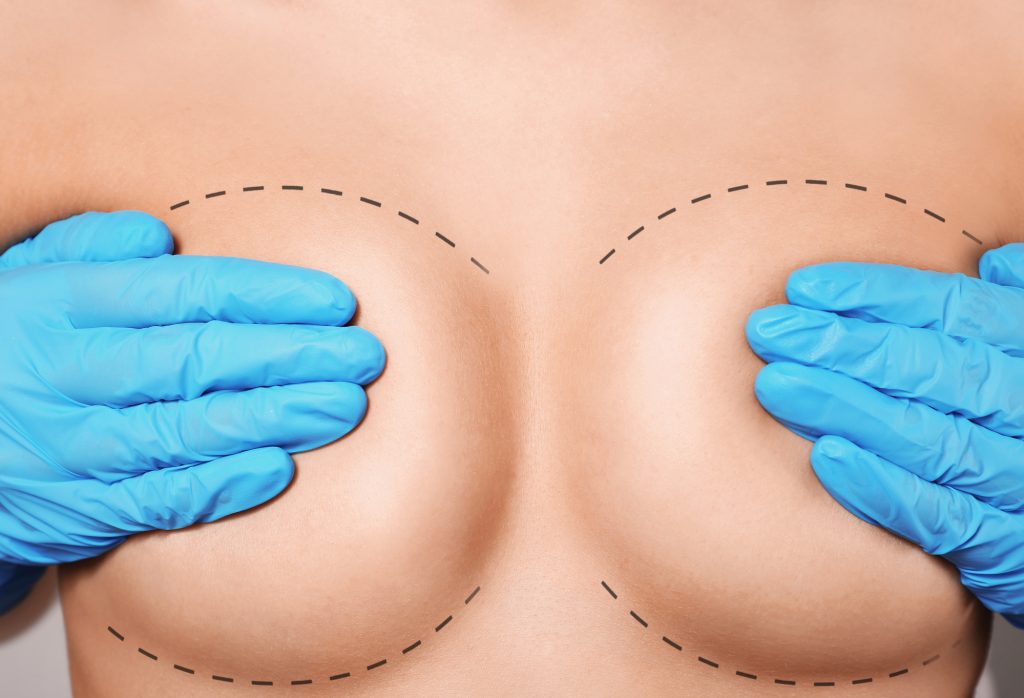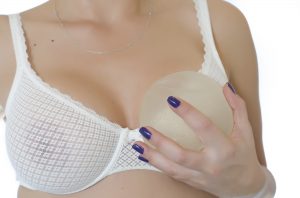
If you have had a mastectomy for breast cancer or are considering one, you may also be considering what to do afterwards. As you explore your options, you owe it to yourself to learn the facts about breast reconstruction surgery as well. This is a very personal decision so take your time in weighing the cost, both emotional and physical. Always make an informed decision when it comes to your body and health.
What Does Reconstructive Surgery with Mastectomy Entail?
A mastectomy is a surgery that removes all tissue from the breast. In conventional medicine, it is done to prevent cancer spread (although this is somewhat of a misnomer since mastectomy does not remove breast cancer stem cells).
Never the less, more women are opting to get mastectomy each year. And in total, over 300,000 American women annually get breast augmentation, either because of mastectomy or for strictly cosmetic reasons.
Reconstructive surgery after mastectomy can be done either at the time of mastectomy (called an “immediate” reconstructive surgery) or “delayed,” which means the surgery will occur at a later date. The materials used to recreate the breast vary and include silicon, saline or the person’s own tissue.
While reconstruction may help a woman feel more like “herself” after Breast Cancer, there are also quite a few risks associated with it, especially concerning the substances used.
Complications with Silicone Implants

In 1992, the United States Food and Drug administration announced a moratorium on silicon implants because of their possible link to rheumatic disease and Breast Cancer. However, as of 2013, certain kinds of silicone implants have been re-approved for use in the United States.
Part of why silicone implants are so harmful is because they don’t just contain silicon. In fact, there are dozens of other chemical substances that may be found in some gels, including formaldehyde and acetone. Silicon-caused nervous system disorders, especially neuropathy on the side where the implant is located, can occur when there is a rupture of the implant or leakage of the material. Silicon leakage can lead to inflammation, fibrosis, and “foreign body reaction,” according to a 2007 study published in Hong Kong Medical Journal. Leakage is so common that many experts recommend either removing or replacing the implant every 8 to 10 years.
Silicone can also be carcinogenic. According to the research, silicon leakage can increase your risk of other kinds of cancer, including lung, colon and pancreatic.
“It’s a neurotoxin,” said Dr. Susan Kolb M.D., F.A.C.S., A.B.I.H.M., an Atlanta-based holistic plastic surgeon and author of the book The Naked Truth About Breast Implants: From Harm to Healing, in a recent interview on Mercola.com. Kolb knows firsthand about the dangers of silicone implants. She was once diagnosed with thoracic outlet syndrome as a result of silicone implant leakage. “Many of the chemicals that Dow Corning [maker of silicone implants] identified in the trials … are carcinogens, and many are neurotoxins. Oddly enough, the plastic surgeons don’t know the list of chemicals that are actually in the gel.”
All is not lost if you are experiencing the negative side effects of silicone implants. “Explantation surgery” can remove implants. In addition, immune system and detox protocols have a good track record for healing side effects once they are removed.
Complications with Saline Implants
Sadly, there are virtually no studies that have critically looked at complications associated with saline implants. According to many experts as well as anecdotal evidence, the problem with saline is not so much with the substance, but what could happen if the valve that is used to fill the implant is damaged through trauma to the chest, like in a car accident or other injury.
If valve malfunction occurs, certain bacteria and mold fungus can get into the implant. There, foreign substances can create biotoxins that can become neurotoxic and even carcinogenic. Symptoms can be similar to those who contract “sick building syndrome” caused by water-damaged buildings.
Another complication of both saline and silicone implants is called “capsular contracture.” This occurs when scar tissue forms around an implant and pulls at it. According to studies conducted at the University of Ontario and others, capsular contracture happens in silicone implants roughly twice as much as it does in saline implants.
Complications with Autologous or “Flap” Reconstruction
Using your own tissue—usually from the belly, buttocks, and/or upper thighs—to reconstruct a breast is called autologous or “flap” reconstruction. Many individuals prefer this kind of reconstruction because the tissue feels most like a regular breast and, according to conventional medicine, it supposedly “lasts a lifetime.”
 Complications can arise with flap reconstruction as well, however. According to Cancer Research UK, complications of autologous reconstructive surgery include infection, flap failure, fluid under the surgery wound, hardening, leakage, unequal breasts if weight changes, and abdominal hernia.
Complications can arise with flap reconstruction as well, however. According to Cancer Research UK, complications of autologous reconstructive surgery include infection, flap failure, fluid under the surgery wound, hardening, leakage, unequal breasts if weight changes, and abdominal hernia.
Some Final Thoughts
Now that you know some of the risks of breast reconstructive surgery, you can make your own decision about how you want to go forward. Remember that any kind of surgery comes with its own cancer metastasis risks. Most women we have coached who have had reconstructive surgery regret going down that road in the long run. I believe that the the best course is always the most natural one, and that means staying away from any kind of invasive procedure whenever possible.
And, if you are a reconstructive surgery candidate, don’t be afraid to consider no reconstruction. I encourage you to read this wonderful article , “Going Flat: Choosing No Reconstruction” posted on BreastCancer.org’s website. It encourages you to learn to be comfortable with your body if you choose no reconstruction. “I don’t care what they take from you as long as I can see your face,” is a common sentiment from partners of Breast Cancer Conquerors.
Embrace your magnificence and your scars – you are beautiful inside and out. Next week I will discuss some other options after a mastectomy and some possible prosthetics to consider.
Dr. Veronique Desaulniers, better known as Dr. V, is the founder of The 7 Essentials System ™, a step-by-step guide that teaches you exactly how to prevent and heal Breast Cancer Naturally. To get your F.R.E.E. 7 day mini e-course, and to receive her weekly action steps and inspiring articles on the power of Natural Medicine, visit https://breastcancerconqueror.com/.

Can you give us any further information on why surgery comes with its own metastasis risks because I am planning to go to New Orleans for a double mastectomy and have your breasts created from my buttocks
Hello Jean! Surgery can increase stress response and cortisol levels which can increase growth markers. Here is a blog that you might find helpful: https://breastcancerconqueror.com/why-does-surgery-spread-cancer-cells/
After 3 years after flap – during double mastectomy-2018 jan – i am going for fat fillers & fat necrosis removal on 7 oct. Happy to keep anyone – especially Dr V with pre & post pics & info. Apparently fat has stem cells – taken from abdomen – that will morph to requirements of tissue….
Thank you for this very informative article. I was diagnosed with stage 2 breast cancer in 2014 and chose to go thru chemo (1 cancerous lymph node in left armpit) for 5 months and then a mastectomy. I had so much pressure to see a plastic surgeon from the oncologist. I refused as I was 55 years old and have always had small breasts and thought breast reconstruction was a huge waste of time and money. I was told I “would feel like a real woman” if I had reconstruction surgery. I left that cancer clinic and went to another one. I had the mastectomy (left side). I did not have the right breast removed as it was healthy. I live in Washington state and there is an organization called “Knitted Knockers” in Bellingham, WA, who knit soft “breasts” to place in one’s bra and they are soft and comfortable. So on the days I don’t feel like being flat on my left side, I use a knitted knocker in my sports bra! This group mails free “knockers” to anyone who has had a mastectomy so please google them for information. I highly recommend them!
Thank you for sharing your story Marla!